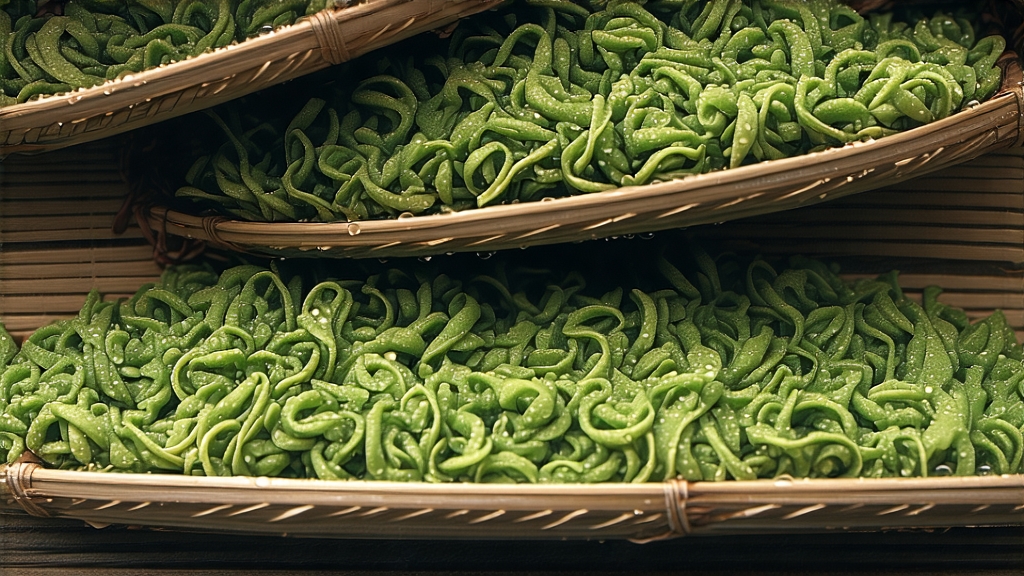
Biluochun, whose name translates literally to “Green Snail Spring,” is one of China’s ten most celebrated teas, yet it remains modest in the global spotlight compared with Dragon Well or West Lake Longjing. Hidden in the misty hills that cradle Taihu Lake in Jiangsu Province, this tea carries the perfume of apricot blossoms and the mineral breath of limestone soil. To understand Biluochun is to listen to a soft-spoken story of imperial favor, maritime trade, and the patient choreography of human hands coaxing fragrance from the tiniest of buds.
History and Legend
The earliest written record appears in the late Tang dynasty (ninth century) when poet-official Liu Yuxi praised “the curled green of Dongting mountain,” a reference to the Dongting Dongshan and Xishan peninsulas that still produce the finest lots. Local legend layers romance atop scholarship: a tea picker, startled by the roar of a river monster, dropped her freshly plucked shoots into the rocky crevice of a cliff. Months later, returning fishermen noticed an intoxicating aroma rising from the fissure. They traced the scent to those forgotten leaves, now naturally withered and curled by wind and mist. The name “Scary Fragrance” (Xia Sha Ren Xiang) stuck until the Kangxi Emperor, touring the region in 1699, found the moniker too vulgar for imperial taste. He rechristened it Biluochun, combining “bi” (green jade), “luo” (spiral shell), and “chun” (spring), a poetic nod to its jade-green coils and early-spring harvest.
Terroir: Taihu’s Microclimate
Taihu, China’s third-largest freshwater lake, acts as a thermal regulator. Night vapors roll upslope, condensing on tea bushes that grow interplanted with fruit trees—peach, plum, apricot, and loquat. The blossoms fall like snow, their petals and pollen settling on tender leaflets, imprinting the tea with a natural floral sweetness rarely achieved through artificial scenting. Soils are sandy loam rich in magnesium and calcium, well-drained yet moisture-retentive, forcing roots to struggle and concentrate aromatic compounds. Elevation is modest—50 to 300 m—but slope angle can exceed 35°, obliging pickers to climb stone terraces that date to the Ming dynasty.
Cultivars and Grades
The original landrace is the Dongting群体种 (qunti zhong), a seed-propagated shrub with small, thick leaves that tolerate lake fog. Since the 1980s, clonal selections such as Dongting 11 and Dongting 14 have increased yield and frost resistance, yet connoisseurs still prize the wilder, more fragrant qunti lots. Grading follows a 1-to-7 scale based on bud-to-leaf ratio and picking date. Supreme Grade 1 consists of one unopened bud wrapped in two tiny leaves, plucked before Qingming festival (early April). Grade 7, harvested after Grain Rain (late April), already contains the third leaf and yields a darker, more astringent liquor. A 500 g top-grade batch requires roughly 70,000 handpicked shoots—equivalent to a full day’s labor for six skilled pluckers.
Crafting the Spiral: A Six-Act Play
- Withering: Fresh leaves are spread on bamboo mats in shaded draft rooms for two to four hours, reducing moisture by 10 % and softening cell walls for the rolling to come.
- Pan-firing (shaqing): In woks heated to 180 °C, 250 g batches are tossed by hand for three to four minutes. The goal is “killing the green” (enzyme deactivation) while preserving bud integrity. Masters listen for the crackle that signals evaporation, never letting leaf temperature exceed 80 °C.
- Primary rolling: Temperature drops to 70 °C; leaves are gently kneaded for five minutes, beginning the signature curl.
- Re-firing and shaping: The most artistic stage. Wok heat oscillates between 50 °C and 60 °C as artisans roll tiny handfuls along the wok’s wall, pressing just hard enough to coil the leaf without breaking surface fuzz. Fingers detect the moment when moisture falls to 30 % and the spiral “sets.”
- Final drying: Coils are transferred to charcoal baskets where embers glow at 40 °C. Over forty minutes, residual water drops to 6 % while the tea absorbs a